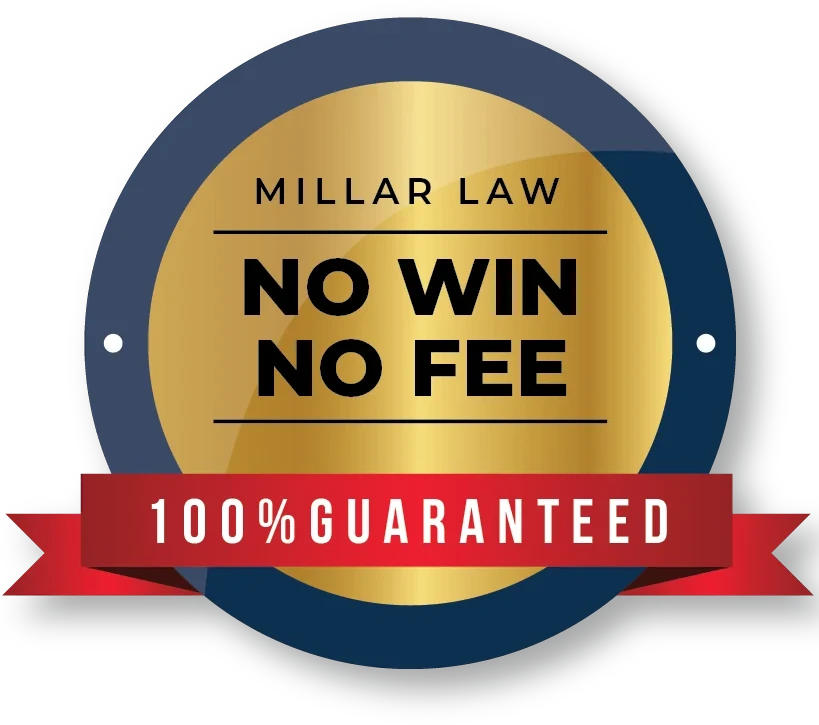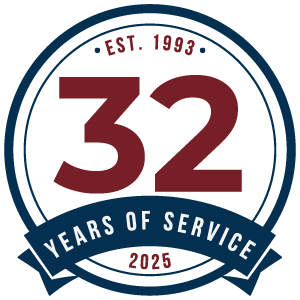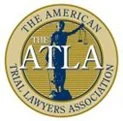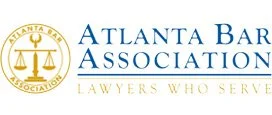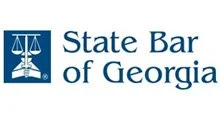A Georgia Legal Guide to How Photographs Can Be Used to Negotiate a Better Car Accident Case Settlement
Key Points:
- Physical evidence must often be cleared away from the scene quickly for the safety of others. If you are able, capturing photographic evidence with your smartphone can preserve the proof you need.
- Taking and preserving photos of the damage to your car and the car that hit you can make the difference in the size of your settlement. Photographs of how damaged BOTH vehicles can be some of your best evidence.
- Preserving graphic images of your injuries immediately after the crash and throughout your recovery can help show how traumatic your injuries and suffering have been.
- We recommend that you do not post photos of your accident or injuries on social media until after your case is over with, and that you do not post photos of physical activities or vacations or family gatherings while your case is ongoing.
Table of Contents
How Photographic to Evidence Helps Strengthen Georgia Car Accident Claims
After a car accident, an insurance company – or if your case goes to trial, a jury must consider different people’s stories to recall a traumatic event. These recollections often dissolve into “he said – she said” situations. Human memories can be imperfect. They can also fade with time. Photographs, on the other hand can tell the unembellished truth about the accident - images of the accident scene and your injuries are extremely useful.
Photos that depict and verify the damage including the injuries caused by a car accident can help capture permanent evidence of precisely what occurred and bolster your legal claim.
Here’s why photos are so important and what images are most critical to car accident cases.
The Importance of Photographs in Establishing Facts
In car accident legal claims or lawsuits, photo evidence can be pivotal in establishing facts that support an accident victim’s case for a settlement.
Photographs serve as tangible proof of the severity of the collision. Clear pictures of the accident scene document the extent of vehicle and property damage as well as physical injuries. This can directly influence the valuation of a claim.
Images that depict the scene in the aftermath of your accident can also capture information about the impacts and depict potential negligence, such as a failure to stop at a red light or improper lane changes. This demonstration of negligence can be crucial in proving the liability of the other party.
- These pictures should include images of property damage to all cars involved, roadway evidence including skid marks and damage to railings, for example. Also, advisable is to take photos of contact information of involved drivers or witnesses. If you must be taken to the hospital, and a passenger.
- If possible, take photos of all the vehicles involved in the crash. Sometimes your car may have minimal visible damage, but the car that hit you was heavily damaged. Don't let an insurance adjuster argue that because your car was not heavily damaged, the impact was not severe. There are many reasons that one car emerges with barely a scratch and the other car is crumpled or totaled. Photos of both vehicles can tell the full story.
- If you did not take any photos at the scene of the accident, don't worry. Take photos of your car the next time you see it. Alternately, photos are often available through requests (your lawyer can handle this) of the insurance companies handling the damage.
Photographic images can capture details that may not be immediately apparent or could be forgotten after the accident. Such details might include the presence of road hazards, weather conditions, or obstructed traffic signs, any of which can contribute to a comprehensive narrative of negligence.
When presented in negotiations or at court, these images can corroborate the victim’s account of the accident and contradict any opposing narratives, thereby strengthening the victim’s position. In short, photo evidence can clarify a difficult, “he said, she said” situation by providing indisputable, visually verified facts. This can tip the scales of justice in favor of the accident victim during settlement discussions.
How Can Photographs Help in Reconstructing the Accident?
Photographs can be critically important in the process of accident reconstruction. Since accident scenes are cleaned up quickly, photos taken immediately following the accident can provide a factual basis from which experts can better analyze the sequence of events leading up to, during, and after a collision.
By examining the final resting positions of vehicles, the distribution of debris, and the patterns of damage, lawyers and even insurance adjusters can use photographs to deduce the vehicles’ speeds, the angles of impact, and the dynamics of the crash.
In complex accident scenarios where the physical evidence may be disputed or unclear, this can be particularly important. High-resolution images can make a detailed examination of subtle but critical elements possible. As an example, the length and direction of skid marks, can point to the actions taken - or not taken - by drivers before the crash. The damage done to objects like guardrails, fences, and the vehicles involved can reveal the direction and magnitude of forces involved.
Photographs can also demonstrate environmental and situational conditions like obscured traffic signs, malfunctioning signal lights, and/ or road defects, which might not be included in written reports or eyewitness statements.
If your claim is disputed, providing visual context to opposing parties can help you establish a more accurate picture of precisely what happened before, during, and after the accident.
This visual context can be used in the process of reconstructing the accident. This process can bring the sequence of events to life in the courtroom. When used, tools like animated reconstruction videos can make it easier for judges, juries, or insurance adjusters to understand precisely what happened and who must bear the responsibility. Photographs not only supplement the narrative but also enhance the credibility and clarity of the facts and assertions made by the accident victim.
Can You Have a Strong Car Accident Claim Without Photos?
Photographic evidence is extremely helpful in providing compelling evidence in car accident claims. Nevertheless, it is possible to have a strong claim without photos.
Other forms of evidence can also play a significant role in substantiating a claimant’s case. Witness testimonies, for instance, can offer critical insights into the accident’s dynamics and help establish fault. Police reports are another key element, as they provide an official account of the accident, often including the responding officer’s observations and any citations issued. Additionally, medical records can serve as a direct link between the accident and the injuries sustained, detailing the extent and causation of the victim’s physical harm.
If you are unable to take photos at the scene because you are injured, you will need to do your best to gather other evidence to fill the gap. This is where an accident reconstruction specialist or other expert witnesses can become critical. These experts can provide compelling evidence that helps to overcome the challenges associated with the lack of photos of the accident scene.
Such experts use physical evidence from the accident scene, including the location, degree of vehicle damage and the nature of the injuries sustained, to establish details about the crash. Additionally, newly developed technological advancements, such as the now common event data recorders, ‘black boxes’ (EDRs) found in newer vehicles, can provide information similar to what photos might show, including pre-impact speed and actions taken by the driver. While having photos is best to strengthen a car accident claim, a well-constructed case without them can still result in a successful settlement when it is supported by a robust array of alternative evidence and expert testimony.
How Do Car Accident Lawyers Collect and Use Photographs in an Injury Case?
At The Millar Law Firm, we employ a number of methods to collect photographic evidence to support your claim. At your first appointment, we request any photos taken at the scene of the accident. These photos can be the most telling images available. If you were unable to take photos because you were injured or otherwise unable to take photos, our team will often reach out to witnesses who might have captured the incident or its aftermath in photos or video. Additionally, your legal team will often visit the scene of the accident themselves or send investigators to take professional-quality photographs from various angles. These photographs can make certain they have a comprehensive visual record of the scene to include other relevant details such as road conditions, traffic signs, and possible line-of-sight obstructions.
Additionally, your lawyers may gather surveillance footage from nearby businesses, traffic cameras, or even neighborhood doorbell cameras that might have recorded the accident.
In today’s connected world, they might also scour social media and local news outlets for any images or video that may have been shared online, which can sometimes provide unexpected angles or evidence not captured elsewhere. In those cases where the physical evidence has been altered or cleared, lawyers can use these collected photos for use by accident reconstruction experts who are able to piece together the events leading up to the accident. This can provide a clearer picture of the accident for insurance companies or, if necessary, in the courtroom.
Yes. Your lawyers may make extensive use of photos and videos from dash cams or body cams to prove car accident claims. These devices capture real-time footage of the events leading up to, during, and after a collision. This footage can provide a dynamic and difficult-to-dispute account of the incident. Dashcam footage, in particular, can be pivotal as it provides a direct view of the accident from the driver’s perspective, including the actions of other vehicles. Such video footage is often instrumental in finding who is at fault, capturing the actual impact, and establishing the road conditions at the time of the accident. Your lawyers will request this footage from anyone who might have seen the accident including the other driver. Occasionally, it is necessary to use legal processes like subpoenas to obtain the footage.
Body cam footage is less common in civilian vehicles, but it can be crucial when available. Very often, law enforcement officers or first responders who arrive at the scene will have body cam footage which can be obtained. This footage can capture the immediate aftermath of an accident, including the positioning of vehicles, environmental conditions, and even the initial reactions and statements of the drivers and witnesses. Candid statements at the scene can be very useful in establishing an accurate picture of the accident itself so, when it exists, your lawyers will work to secure this footage, which can be used to corroborate or dispute claims made by those involved. In both cases, the authenticity and the timestamp of the footage are key components that lawyers will verify to ensure the evidence is admissible and effective in supporting their client’s case.
Certain evidentiary rules apply to the use of photos in court. A photo could be disqualified if it is ruled to be not directly relevant to the claim or does not contribute to the establishment of the facts. The original condition of the photo is essential and any suggestion of tampering can significantly detract from its reliability as evidence. If, for example, the authenticity of the photo is compromised through alteration or editing, it may be disqualified.
Privacy concerns can also lead to disqualification; photos taken in violation of someone’s reasonable expectation of privacy may not be permissible.
The photo’s chain of custody is equally important for reasons around its authenticity. In order for a photo to be relied upon as evidence, your legal team must be prepared to present a clear record of not only who captured the image, but also how it was stored. They must also be able to confirm that it has remained unchanged since the accident in order for it to be admitted into evidence.
Additionally, if a photo is excessively graphic or might be deemed prejudicial, it could be excluded on grounds that it may unduly sway its assessment. Legal professionals must be certain that all photographic evidence is meticulously collected, documented, and maintained in order to protect and ensure its integrity for the insurance claim process.
How Can Photos Prove Who Was At-Fault in a Car Accident?
Photos are often effectively used in determining who was at fault in a car accident. They can capture details that tell the clear story of the collision’s circumstances.
- The photos can be used to determine which vehicle had the right-of-way immediately before the accident happened. The same photo may also show whether each vehicle was in its proper lane at the time of the collision.
- Where the vehicles were located following the accident can be very telling.
- Images that clearly show the area of the accident are also helpful. They should show traffic signals, road signage, lane markings and skid-marks which provide not just context, but also can indicate what actions the drivers took to avoid the crash.
- Detailed photos of vehicle damage are useful in determining the point of impact. This helps experts to establish the direction and speed of each vehicle at the moment of impact.
- Environmental factors, such as signage obscured by overgrown trees and bushes, non-functional traffic lights, or poor road conditions can be shown in photos.
- Skid marks on the pavement can help experts to know what actions, if any, were taken by the drivers when the collision was imminent.
During the negotiation of your claim, your legal team can save time and effort by using photos to connect these photographic clues, making settlement come sooner rather than later.
How Do Lawyers Use Photos to Negotiate with Insurance Companies?
Lawyers leverage photos as a powerful tool to negotiate with insurance companies by presenting clear and indisputable evidence of the accident’s circumstances.
When a photo can be used to clearly demonstrate the extent of vehicle damage, injury to the victims as well as any contributing environmental or roadway conditions, it makes the task of proving your claim much easier. This visual evidence can substantiate the lawyer’s arguments regarding the severity of the accident and the associated liabilities, making it harder for insurance adjusters to downplay the claimant’s damages or the insured’s responsibility.
In negotiations, lawyers use photos to build a compelling narrative that aligns with their client’s account of the incident. By presenting a chronological photo sequence of the accident’s aftermath, they can effectively demonstrate causation and fault, which are critical in determining the settlement amount. Photos can also be used to counter any discrepancies or disputes raised by the insurance company, providing a factual basis that supports the claimant’s version of events. Creating an effective and conclusive visual impact upon insurance adjusters, or the court will help to speed up your full and fair compensation.
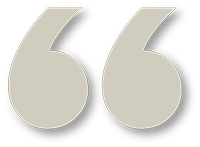
 1201 West Peachtree Street #2339 Atlanta, GA 30309+1-770-212-3795$0-$100000
1201 West Peachtree Street #2339 Atlanta, GA 30309+1-770-212-3795$0-$100000Mr. Joe Baker was extremely helpful in addressing my concerns. He kept me well-informed throughout the entire process of my case. Thank you for all that you do—keep up the great work!

How Photo Evidence is Shared in a Car Accident Legal Battle
In the settlement process for a car accident claim, the sharing of photo evidence is a key component of the negotiation between the claimant’s lawyer and the insurance company. The evidence is typically compiled and organized by the claimant’s legal team and then submitted to the insurance adjuster as part of a demand package. This package lays out the case for the claimant’s compensation, underpinned by the photographic evidence that clearly demonstrates the extent of damages and supports the claim of liability.
Photographs are distributed in such a way that their quality, integrity, and relevance is perfectly preserved. Often, this means using secure email or file-sharing services. Digital photo metadata which includes timestamps and GPS (Global Positioning System) information provides authenticity to visual evidence. Supporting the authenticity of the evidence makes it a more compelling, more effective tool in your claim.
Taking care in gathering and presenting your photographic evidence can make your legal team’s efforts to win your case much easier.

